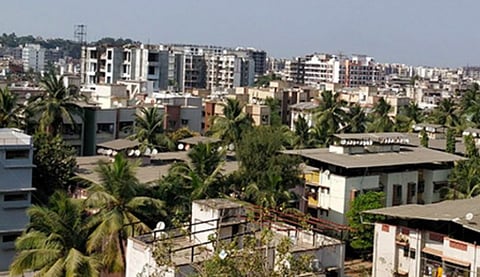

The transition from the old model towns built during the late 1960s and the new townships developed during the late 1990s (still continuing) is very stark. The old towns were built by adding housing as an inalienable part of the industrialisation-driven urbanisation. The towns built post-1990s have been driven with free market economy principles where the informal sector has catered to housing taking it beyond the reach of the working people.
The Covid-19 pandemic and the lockdown in March 2020 exposed the complete hollowness of the urban development strategy. The informal sector workers- mostly migrants- could not stay back in urban centres for even 24 hours and returned to their villages, fearing that they would starve to death in cities.
This reverse migration highlighted the issue of inadequate housing in cities. Post-1990s, the housing models of building condominiums, like the Singaporean style, and allowing the private capital to be a large participant in it has shown how iniquitous this model is.
A majority of migrant workers, almost 95%, cannot afford to live in such condos. According to the NSSO – 2019, 31 million households in urban India live on rent and a vast majority of these stay in informal arrangements like slums etc.
The government, instead of taking a proactive role in providing housing for the workers, has come out with a scheme called ARHC (Affordable Rental Housing Complexes).
According to the website of the Ministry of Housing and Urban Affairs (MoHUA), "The ARHC scheme envisages the creation of a sustainable ecosystem of affordable rental housing that provides migrants and urban poor with dignified living with necessary civic amenities near their place of work".
There are two modes of delivery envisioned in the ARHC scheme. The first mode involves converting existing government-funded public housing into rental housing by public agencies or in PPP(Public-Private Partnership) model. The central government has directed the state governments to utilise vacant and under-construction houses funded by previous schemes for this component. These schemes include houses constructed under Basic Services to the Urban Poor (BSUP), Integrated Housing and Slum Development Programme(IHDSP), Jawaharlal Nehru National Urban Renewal Mission (JNNURM) and Rajiv Awas Yojana (RAY).
The second mode of delivery envisages that rental housing will be constructed, operated and maintained by public/private actors on their own land. We will have to wait and see how this unfolds.
Once the states sign the MoA (Memorandum of Agreement) with MoHUA, they will then engage agencies who the scheme refers as concessionaires to participate in the scheme. Under Mode 1 of the scheme the select concessionaires, a private/public entity, will repair and retrofit these vacant units, manage them for a period of 25 years and then hand them back to the state/Urban Local Bodies(ULB). The rental amount will be fixed by the state/ULBs. The concessionaires are expected to develop necessary social infrastructure as needed.
According to the MoHUA dashboard under the ARHC scheme, there are nearly 86,065 vacant houses that were constructed under various schemes in the country. To date (since December 2020), out of these only 1,934 have been allotted. The bulk of this allotment has been done by the Chandigarh administration- nearly 88% of the total number-1707.
Instead of addressing the larger housing problem and the ecosystem attached to it, merely the piecemeal approach of converting the already constructed houses into rentals will not help. Why is it that the beneficiaries of the above-mentioned schemes did not occupy these houses?
Here are a few reasons. Firstly, in most cities, these projects are located on the periphery and are poorly connected with other populated areas. Secondly, most of these projects, due to their peripheral locations, have not been connected with basic services like water and sewerage, and public amenities like anganwadis, government schools and health facilities. Thirdly, there is also an aspect of poor design and construction that has been noted in these projects.
A study, recently conducted by a group of activists from the Centre for Policy Research (CPR) and Working People's Charter (WPC) and titled, 'India Housing Report,' stated a few more reasons. The study found that the women's lives were particularly impacted in the transition from inner-city slum housing to peripheral public housing. Not only did they lose opportunities for domestic work available in close proximity they also lost time. Hence, there was has hardly any social mobility witnessed.
Not less than 85% of informal workers travel a distance of less than 5 km as their daily commute to their workplace and spend less than Rs 500. Hence peripheral locations of these houses will once again render them meaningless unless there is a subsidised transport system for the workers.
Likewise, rent affordability is a big issue. The average rent paid across India is nearly Rs 3,324, according to the NSSO survey 2018. The ARHC rent should not be more than this to ensure that these are occupied and sustained. However, the scheme illustrates that it is designed to be financially self-sustaining which implies that rent would be the major component for making it self-sustaining. This will again dissuade the workers from availing such accommodation.
The ARHC scheme which is direly required for the migrant workers in the cities falls short of the desired goals and is embedded in the monetisation framework which may not fetch the desired results.
There must be an active role of the city and state governments taking workers unions and other social groups into consideration. Else it will falter the way most of the flagship programmes of the government have fallen. But that would be more perilous for the migrant population in the cities.
The writer is the former deputy mayor of Shimla, Himachal Pradesh. The views are personal.
First published by Newsclick.